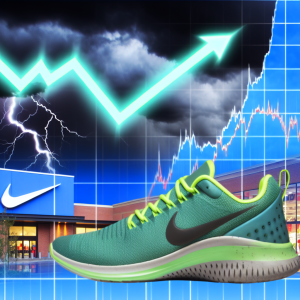Vietnam Tariffs: A Relief with a Catch for Retail Investors and Advisors
The recent announcement of a tentative trade deal between the U.S. and Vietnam, reducing tariffs on Vietnamese imports to 20% from a previously proposed 46%, has brought a cautious sigh of relief across the retail industry. But beneath the surface, this development carries complex implications that investors and financial advisors need to unpack carefully.
The Tariff Landscape: What Changed and Why It Matters
Originally, President Trump’s administration proposed steep tariffs on Vietnamese imports, mirroring the punitive measures on Chinese goods, which had soared to cumulative rates as high as 55%. The initial 46% tariff on Vietnam—later suspended—threatened to unravel years of strategic supply chain shifts by major apparel and footwear brands like Gap, American Eagle, and Nike, which had been diversifying away from China to Southeast Asia.
Vietnam has become the second-largest supplier of footwear, apparel, and accessories to the U.S. market, with projections from the Footwear Distributors and Retailers of America indicating it could become the largest by 2025. This shift was driven by cost competitiveness and geopolitical stability relative to China. The 20% tariff, while a relief compared to 46%, still doubles the current 10% duty and signals ongoing pressure on profit margins and pricing strategies.
What This Means for Investors and Advisors
-
Supply Chain Resilience Is Key
The tariff uncertainty underscores the importance of companies having flexible, diversified supply chains. Investors should favor companies that have successfully mitigated geopolitical risks by spreading manufacturing footprints across multiple countries like Vietnam, Cambodia, Bangladesh, and Malaysia. Retailers heavily reliant on China or single-source suppliers face higher risk exposure. -
Pricing Power and Consumer Impact
AlixPartners’ pricing models show that a 20% tariff could add roughly $10 to the cost of a $95 pair of shoes if costs are fully passed to consumers. This price inflation risks dampening consumer spending—already pressured by inflation and economic uncertainty. Investors should watch for companies with strong brand loyalty and pricing power, as they are better positioned to maintain margins without losing customers. -
Watch for Margin Compression and Margin Management Strategies
Companies like Nike are likely to raise prices, but not all will fully pass costs to consumers. Margin compression could hit earnings, particularly for mid-tier brands without the luxury pricing cushion. Advisors should scrutinize earnings calls and financial reports for signs of margin management strategies such as cost-cutting, supplier negotiations, or product mix shifts. -
Trade Policy Volatility Remains a Wild Card
The deal is tentative, with no clear timeline or mutual agreement confirmation. The next 12 months could see further tariff adjustments or new trade negotiations. Investors should consider the volatility risk in retail stocks linked to international supply chains and stay alert to policy updates.
Unique Insight: The Hidden Consumer Sentiment Risk
Beyond direct price impacts, there’s a subtle but significant risk to consumer sentiment. Paul Cosaro, CEO of Picnic Time, highlights that even a “better” 20% tariff means less disposable income for discretionary spending, which could ripple through sectors beyond apparel—think outdoor goods, leisure, and lifestyle products. This broader consumer pinch is an underappreciated factor that could weigh on retail sales growth forecasts.
Actionable Advice for Investors and Advisors
- Reassess Retail Portfolios: Focus on companies with diversified manufacturing, strong pricing power, and robust supply chain strategies. Avoid or underweight retailers overly dependent on high-tariff regions.
- Monitor Consumer Spending Trends: Use data from sources like the U.S. Bureau of Economic Analysis and retail sales reports to gauge how tariff-driven price increases are affecting consumer demand.
- Stay Informed on Trade Policy: Engage with real-time news and expert analysis on U.S.-Vietnam and broader Southeast Asia trade developments. Consider geopolitical risk as a dynamic factor in portfolio risk management.
- Explore Opportunities in Supply Chain Innovators: Companies investing in supply chain technology, automation, and nearshoring may gain competitive advantages amid tariff uncertainties.
What’s Next?
While the 20% tariff deal may prevent a crisis, it signals a new era of cautious recalibration for retail investors. Expect continued volatility and strategic shifts as companies adapt to a more complex global trade environment. For investors and advisors, the key to navigating this landscape will be agility—staying ahead of supply chain trends, pricing dynamics, and policy changes to protect and grow portfolio value.
Sources:
- American Apparel & Footwear Association (AAFA)
- Footwear Distributors and Retailers of America (FDRA)
- AlixPartners Pricing Models
- CNBC Interviews with Industry Executives
This evolving story is a reminder that trade policy is not just a headline—it’s a fundamental driver of market dynamics that savvy investors must track closely. Stay tuned to Extreme Investor Network for the latest insights and actionable analysis.
Source: How tariffs affect retail, Nike

